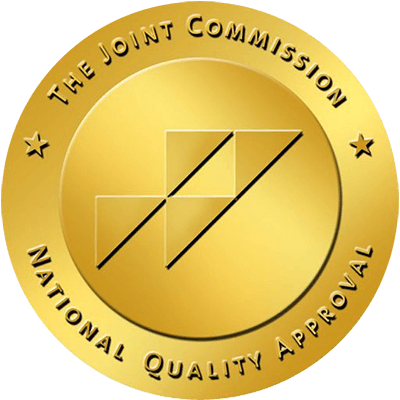Written by Brad Kittredge,
Brightside Health
7 Minute Read

Health systems provide the lion’s share of Americans’ healthcare. Nationally, 88.2% of hospital beds and 44.6% of physicians — including nearly 50% of primary care physicians — are part of a health system. Over the past several years, though, these systems have been overwhelmed by the large volume of patients requiring specialty care, often failing to provide prompt access. And while a parallel system of specialized telehealth providers has emerged — and proven more than capable of delivering high-quality care to those patients — health systems have been slow to embrace partnerships with these companies. As a result, consumers must piece together care across a network of often disconnected providers or forgo the high-quality care they could receive from a simple referral to a specialized telehealth provider.
A question I’m often asked is, why don’t health systems just hire more providers or offer more telehealth appointments? If there’s that much demand for these services, can’t they just increase their capacity? Unfortunately, it’s not that simple. Health systems are limiting additional investment or even completely exiting things like behavioral health because, for many, it simply isn’t a strategic priority.
Additionally, with the increasing provider shortage, hiring more clinicians is a tall order — and even if it were possible, it wouldn’t enable health systems to cover gaps in care the way specialized telehealth providers can. Companies delivering this type of care offer far more than online visits — they present an entirely new care experience built atop technology that enables continuous monitoring, clinician interaction, and AI-based clinical decision support and intervention. So the real question is, how do we seamlessly integrate innovative, scalable treatment models into the patient flow of our country’s health systems? How can we use specialized telehealth providers to augment a health system’s capacity to better serve their patients without requiring incremental investment?
The answer is collaboration.
Health systems can’t — and shouldn’t have to — do it all. We’re at an inflection point where the old and new systems must collaborate to create a unified ecosystem rather than competing against each other. Patients are sitting on long wait lists, unable to get the care they need or the high-quality experience they deserve. We must align the opportunities and benefits of specialized telehealth with the strength of existing health systems to drive down costs and address these needs.
How Telehealth Collaboration Should Look
To discuss how collaboration between health systems and specialized telehealth should play out, we must reframe how we view telehealth and its role in delivering whole-person care at scale. It’s important to recognize that telehealth is not just an online visit between a patient and a provider; it is technology-enabled healthcare delivered virtually.
This is an important distinction, as specialized telehealth solutions do far more than provide virtual appointments–they deliver additional resources to providers and patients during appointments and the critical moments between them. If the explosion of telehealth during the pandemic taught us anything, it’s that the old model of infrequent in-office visits is no longer viable. Instead, patients want immediate care and access to their providers between sessions. In fact, to achieve better outcomes, patients need both continuous monitoring and real-time care management.
While health systems are great at many things, building this kind of technology is not often one of them. Instead, health systems should look to integrate specialized telehealth into their patient flows, choosing strong, tech-enabled collaborators who are already covering our country’s widest gaps in care. These specialized collaborators can more effectively and efficiently treat complex conditions by allowing patients to interact with the platform and their clinician between appointments. At the same time, clinicians can responsively intervene to deliver care when needed.
Simply put, collaboration enables a level of proactive and specialized care that health systems cannot achieve alone. But quality is key. Health systems considering collaboration should be willing to ask difficult questions regarding quality, safety, and outcomes. Specialized telehealth companies are uniquely positioned with a wealth of data at their fingertips, and they can and should use that data to continuously improve care delivery. These outcomes shouldn’t just be visible on company websites; they should be published in peer-reviewed journals. You should also expect telehealth providers to follow industry best practices and standards, such as completing HITRUST certification. Finally, it’s important that your collaborator can support your payer mix through direct contracts or through subcontracting with you.
Working Together to Solve Complex Problems
This model of collaboration is well-suited for solving complex problems in resource-constrained fields of care. Mental health care is an excellent use case. As health systems contend with months-long psychiatric wait times, telepsychiatric care platforms can ease the pressure. The issue of provider shortages is critical as the effects spill over into the emergency department (ED). While 62% of EDs lack psychiatric services to manage patients in crisis, the ED still triages psychiatric needs for those who don’t know where else to go. These patients take three times longer than average to move out of the ED and on to appropriate care. Inefficiencies in triage, evaluation and care are contributing to overcrowding, fewer bed turns, reduced scores on HEDIS measures, and an altogether untenable situation for health systems and hospitals.
Telehealth alone can’t solve this crisis, but we can make much more meaningful progress on these persistent challenges by working together. For example, integration with a telepsychiatry solution would allow treating larger patient panel sizes without compromising care quality. In addition, it would provide the ability to triage those with urgent needs and provide effective treatment — particularly for more severe and acute presentations such as suicidal ideation. This also makes specialized telehealth a viable referral pathway for step-down services for post-acute care. Finally, closer integration means a better experience for providers, who can confidently refer patients to specialized care quickly while maintaining visibility into patient care through a robust data-sharing loop.
Mental healthcare isn’t the only field that can benefit from this loop. For example, there is a parallel use case in chronic disease management. Together with mental illness, chronic diseases comprise 90% of the US’s $4.1 trillion in annual healthcare spending. In spite of this enormous yearly investment, health outcomes in this area remain abysmal. Specialized telehealth solutions can provide more comprehensive care for certain patients, especially those at higher levels of severity and acuity.
Of course, these two use cases are connected: there is a high incidence of chronic comorbidities among mental health patients, and mental health issues make it more difficult to manage those comorbidities. By collaborating with specialized telemental health partners, health systems around the country can deliver better outcomes for patients with mental health concerns, chronic diseases, and across populations, all while lowering costs.
Embracing the Next Phase of Evolution
Health systems have deeply-rooted community ties, patient relationships, and an in-person presence that telehealth will never replace. But current care needs are stretching their capacity, resulting in long wait lists, dissatisfied patients, and unnecessary emergency department visits. At the same time, the innovations of specialized telehealth are already driving big shifts in US healthcare. Collaboration offers health systems the opportunity to co-create a unified ecosystem that will deliver improved access and outcomes, reduced costs, simplified patient navigation, and a better healthcare experience for all.
Written by Brad Kittredge, CEO and co-founder of Brightside Health
Brad Kittredge has spent over a decade pioneering evidence-based and consumer-driven health care solutions, including building the Product teams at 23andMe and Lantern. Inspired by the challenges of a close family member with lifelong depression, Brad’s mission is to ensure that everyone has access to life-changing mental health care with measurably better outcomes. He holds MPH, MBA, and Psychology degrees from the University of California, Berkeley.
This article originally appeared on Medium.
Get in Touch




